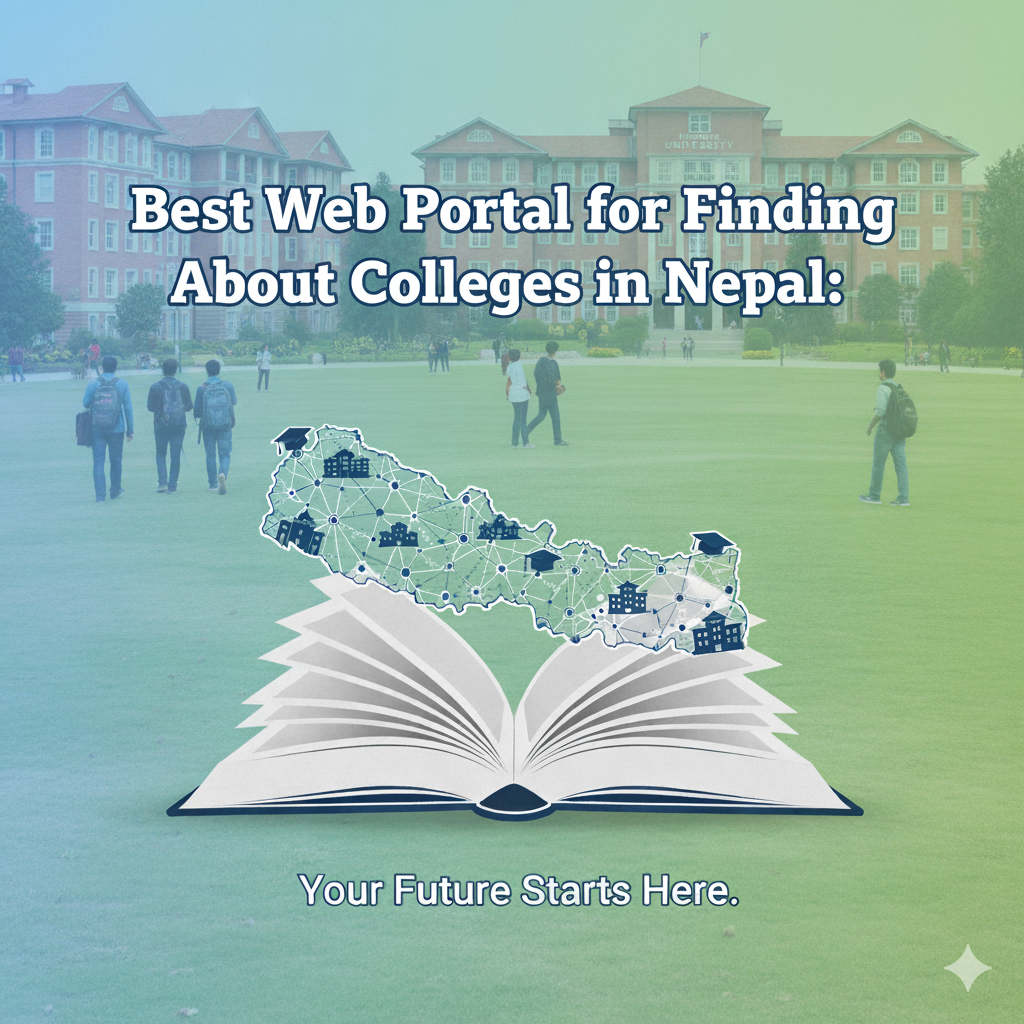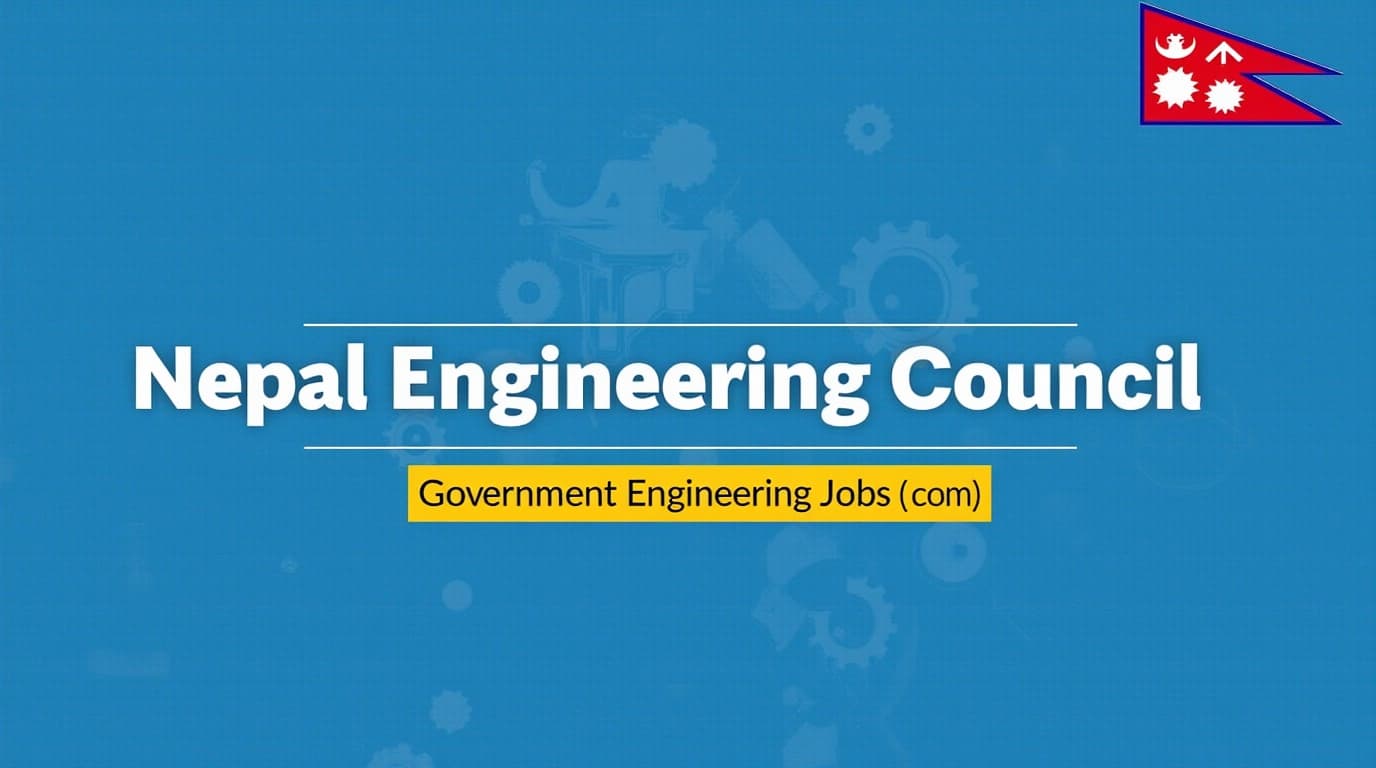Artificial Intelligence in Nepal’s Public Administration: AI’s Impact on Governance


Artificial intelligence (AI) has exploded into public awareness and debate worldwide, reshaping conversations about technology and society. In 2023, “ChatGPT” – an AI chatbot – became the top global Google search term, with searches for ChatGPT surging by over 2,000% during the year. This astonishing spike in interest reflects how rapidly AI has captured public imagination. Governments are also taking note: for example, the European Union’s landmark AI Act – the world’s first comprehensive AI law – was drafted to ensure AI systems are safe, transparent, and accountable, aiming to protect fundamental rights while fostering innovation. Such high-level initiatives in 2024–25 signal that policymakers globally are treating AI as a priority issue. All this momentum has made AI one of today’s hottest current-affairs topics.
Nepal’s first multistakeholder dialogue on AI governance (November 2023) brought together government, academic, and civil society leaders to discuss AI’s opportunities and regulatory needs.
While AI is a global phenomenon, it is highly relevant for Nepal as well. The presence of AI is on a “meteoric rise” as digitalization accelerates, raising governance and regulation concerns in Nepal just as in other countries. In late 2023, Nepal held its first-ever multistakeholder dialogue on AI governance – an event co-organized by UNESCO and Nepal’s IT Ministry – to assess AI’s opportunities and challenges for the country. This dialogue (attended by government officials, tech experts, academia and civil society) was a ‘first of its kind’ in Nepal and underscored both the excitement about AI’s potential and the need for responsible oversight. Clearly, Nepal is beginning to grapple with how AI might transform its governance landscape. In fact, the Government of Nepal has already introduced a draft National AI Policy 2025 – a foundational strategy to foster AI innovation and governance – with the goal of transforming Nepal into an “AI-centric nation” in line with rapid global tech progress. This policy (released for public consultation in Feb 2025) signals that Nepali leaders recognize AI as a vital element of national development. However, it also highlights that simply having a policy is not enough – the real test will be implementation and addressing challenges.
Global AI Boom and Why It’s Trending
AI’s recent boom can be attributed to breakthroughs in “generative AI” and public-facing tools that have brought the technology into everyday use. The viral success of ChatGPT is a prime example – within months, it amassed millions of users globally, demonstrating the power of AI to perform human-like conversations and tasks. As noted, ChatGPT dominated internet searches in 2023, reflecting worldwide curiosity about AI’s capabilities. This surge in public interest has gone hand-in-hand with a proliferation of AI applications in daily life, from writing assistants to image generators, which capture headlines and imagination.
Crucially, governments and international bodies have responded to this AI wave with urgent attention. The European Union’s AI Act stands out as a landmark response: it is the world’s first comprehensive regulation for AI, positioning the EU as a global leader in AI governance. The AI Act adopts a risk-based approach – banning the most dangerous AI uses and imposing strict requirements on high-risk systems – to ensure AI development is “safe, transparent, and governed by rules that protect fundamental rights”. In other words, policymakers want to maximize AI’s benefits but also mitigate harms like bias or privacy violations. The fact that such sweeping legislation was formulated in 2024 shows how rapidly AI moved to the top of agendas. Similarly, other countries are drafting AI strategies, and global forums (UN, OECD, etc.) are debating ethical guidelines for AI. This high-level policy focus in 2024–25 underscores that AI isn’t just a tech trend – it’s now a core governance concern. From ensuring data privacy to preventing algorithmic discrimination, governments see that they must play a role in guiding AI’s growth.
For a small country like Nepal, these global trends matter because they set norms and offer lessons. Nepal cannot remain isolated from what the EU, US, or India are doing on AI. Indeed, Nepal’s own nascent AI policy references aligning with international standards and ethical principles (such as UNESCO’s AI ethics guidelines) to ensure a “human-centric” approach that upholds rights and transparency. The worldwide AI boom has effectively put pressure on all governments, including Nepal’s, to devise a stance on AI – whether through laws, policies, or capacity-building – so that they are not left behind in this technological shift.
AI’s Relevance for Governance in Nepal
AI is poised to transform public administration and governance, and Nepal stands to gain significantly if it harnesses these tools. Around the world, integrating AI into government operations has shown potential to enhance efficiency, improve transparency, and support data-driven decision-making. Nepal can leverage these same advantages to strengthen its public sector. For example, experts note that bringing AI into government offices can improve efficiency, transparency, and service delivery by automating routine tasks and reducing red tape. Mundane administrative jobs – like data entry, record-keeping, or processing of applications – could be handled by AI systems (such as robotic process automation or smart databases), freeing up human officials to focus on higher-level work. This not only speeds up service delivery to citizens but also minimizes opportunities for human error and petty corruption (since AI systems follow predefined rules). Furthermore, AI analytics can help leaders make fact-based policy decisions: tools that crunch large datasets (e.g. on budgets, populations, or project outcomes) can reveal insights and suggest policy improvements, leading to more informed governance. In a developing country with limited resources, such data-driven planning is invaluable for allocating budgets effectively and measuring what works.
Transparency and accountability in government can also be bolstered through AI. Automated systems keep detailed logs and can be designed to be auditable, meaning decisions (say, an AI system that helps determine resource distribution or identify welfare beneficiaries) can be recorded and reviewed. This reduces arbitrariness. Additionally, AI-driven monitoring systems can flag irregularities – for instance, algorithms might detect anomalies in procurement data or flag unusual patterns in service delivery – acting as watchdogs against misuse of public funds. In Nepal, where improving governance and reducing corruption are perennial goals, these AI tools offer new ways to build public trust through open data and algorithmic transparency.
Just as importantly, AI can improve how accessible and inclusive public services are. In Nepal’s context – with challenging geography and uneven service reach – AI could help bridge gaps. For instance, AI chatbots or virtual assistants could be deployed on government websites and messaging platforms to handle citizen inquiries 24/7 in multiple languages (including Nepali and local dialects), guiding people to the right information or forms. This would be especially useful for citizens in rural areas who cannot easily travel to government offices – an AI-powered helpdesk can bring services to their fingertips. In fact, Nepal’s forthcoming Digital Nepal Framework 2.0 envisions transforming public service delivery across sectors with the aid of technology, including AI.
Nepal’s government recognizes these opportunities. The National AI Policy draft explicitly highlights AI’s potential to improve public administration and various sectors, noting that as a developing country aiming for digital inclusion, Nepal “has much to gain from the responsible integration of AI technologies.” Key initiatives under discussion include establishing an AI Center of Excellence and even developing home-grown AI solutions. Recently, officials announced plans for a Nepali Large Language Model (LLM) – an AI that understands Nepali language – and computer vision systems tailored for Nepal’s needs in agriculture, health, tourism, education, and traffic management. These flagship projects suggest that Nepal is looking to not only import AI solutions but also build its own capacities (for example, an AI that can process Nepali-language text could be used in government for translating documents or analyzing public feedback in Nepali). Likewise, pilot applications are envisioned in agriculture (like crop disease detection or yield prediction), healthcare (diagnostic tools, medical image analysis), tourism (AI-driven virtual tour guides and translation for visitors), and urban management (smart traffic light systems for Kathmandu’s congestion, etc.. Each of these use-cases could significantly improve service effectiveness. For example, AI-driven predictive analytics in agriculture could help Nepali farmers get early warnings about weather or pest outbreaks, allowing the government to respond faster with support. In healthcare, AI diagnostic systems and telemedicine can extend quality care to remote villages by assisting health workers with expert guidance or reading medical scans – critical in a country with an uneven distribution of doctors. In education, AI tutoring platforms could personalize learning for students in far-flung districts, helping to bridge urban-rural education gaps.
In short, AI offers Nepal a chance to “leapfrog” some development hurdles in its public sector by increasing the speed, quality, and reach of services. It aligns with the government’s broader push for e-governance and digital transformation. By automating what can be automated, analyzing what is too complex for manual methods, and extending the reach of experts via technology, AI can help Nepal’s administration become more responsive and citizen-centric.
Challenges and Risks: Navigating AI in Governance
While the promise of AI in governance is great, Nepal must also confront significant challenges and risks in adopting AI for public administration. Many of these challenges mirror global concerns, though some are accentuated by Nepal’s local context.
1. Data Privacy and Security: AI systems often rely on large amounts of data – including personal data of citizens – to function effectively. This raises concerns about privacy and data protection, especially in governance applications (for instance, an AI that analyzes healthcare or social security data). Nepal currently lacks a robust legal framework for data protection. The draft AI policy acknowledges the need for a Data Protection Act to regulate AI-related data use, but as of 2025 this legal safeguard is still in progress. Without clear data protection laws and cybersecurity measures, increased use of AI could expose citizens’ sensitive information to misuse or breaches. This is a serious issue because public trust in e-governance will falter if people fear their data isn’t safe. Therefore, Nepal needs to prioritize passing and enforcing data privacy legislation (as many countries are doing in parallel to AI initiatives) to ensure that as government data gets fed into AI systems, it remains secure and confidential.
2. Bias and Fairness: AI algorithms can inadvertently perpetuate or even amplify biases present in their training data. In governance, this is problematic – imagine an AI system trained on biased data being used to screen job applicants or distribute welfare benefits; it could end up unfairly favoring or excluding certain groups. Nepal is a diverse country (ethnically, linguistically, geographically), so bias is a real concern. If AI tools are not carefully designed and audited, they might, for example, work better for Nepali speakers of one dialect over another, or for urban populations over rural. The UNESCO Recommendation on the Ethics of AI, which Nepal has endorsed, emphasizes principles like non-discrimination, inclusivity, and fairness in AI systems. Nepal’s policy documents mention ethical AI and avoiding bias, but critics note that the current policy draft lacks detailed frameworks for ensuring this in practice. Going forward, implementing AI in Nepali public administration will require steps to mitigate bias – such as using diverse training data (e.g., including Nepali data from all regions and communities), conducting algorithmic impact assessments, and having human oversight especially on high-stakes decisions. An advantage is that Nepal can learn from international best practices here: for instance, adopting guidelines from the EU or OECD on AI ethics and tailoring them to local needs. Additionally, local AI experts suggest training AI models on Nepal-specific data (where available) to improve their relevance and accuracy for Nepali users. This could help AI systems better understand Nepali languages and contexts, reducing errors and bias.
3. Infrastructure and Digital Divide: A very pragmatic challenge is whether Nepal has the technological infrastructure to support advanced AI systems countrywide. The reality is that Nepal’s digital infrastructure is still developing. Many rural areas suffer from unreliable internet connectivity and limited access to electricity, let alone advanced computing facilities. The National AI Policy document candidly points out that Nepal’s digital infrastructure is vulnerable, with patchy internet and a lack of high-performance computing centers. Implementing AI solutions – especially those requiring cloud computing or real-time data processing – may be difficult unless connectivity improves. The policy calls for establishing AI data centers and cloud platforms, but it’s unclear how these will be funded or built. Funding constraints are a related issue: cutting-edge AI development or procurement can be expensive, and Nepal will need investments (possibly via public-private partnerships or international support) to build the necessary infrastructure. Without adequate infrastructure, AI projects could remain pilot experiments in a lab rather than scalable solutions available across all provinces. Moreover, the digital divide among Nepali citizens is a concern – not everyone has smartphones or digital literacy to benefit from AI-based services. For instance, an AI-driven mobile app for farmers is only useful if farmers have connectivity and know how to use the app. Thus, along with building the tech backbone, Nepal must invest in internet access and digital literacy, so that AI-driven governance does not exclude those in remote or disadvantaged communities. The government’s plan to increase broadband access and the emphasis on “accessible digital rights for individuals with disabilities” at the 2023 AI dialogue shows awareness of this inclusivity issue.
4. Skill Gaps and Capacity: Successfully using AI in public administration requires skilled personnel – not only AI developers and data scientists to build or procure the systems, but also government officers who understand how to work alongside AI tools. Nepal currently has a limited pool of AI professionals. The policy highlights the need to incorporate AI education in universities and training institutes to cultivate a domestic AI workforce. This is a forward-looking step, but developing human capital takes time. In the short run, there is a risk that Nepal’s public institutions may lack the expertise to implement or manage AI projects. For example, if a ministry adopts an AI system, do they have IT staff who can interpret its outputs or handle its maintenance? Capacity-building is essential. Options include training current officials on digital governance and AI basics, bringing in experts from the private sector or diaspora, and collaborating with international partners for knowledge transfer. If not addressed, this skill gap could hinder the effectiveness of any AI initiative – the fanciest AI analytics tool is of little use if decision-makers don’t understand the analysis it provides. Encouragingly, some Nepali universities (like Kathmandu University) have started specialized AI programs, and various workshops and “boot camps” are emerging to upskill youth in AI, which will help produce talent in coming years. In the meantime, public-private collaboration can fill some gaps – the government can partner with local tech companies or international organizations to implement pilot projects, while training officials alongside.
5. Regulatory and Ethical Oversight: As Nepal deploys AI in governance, establishing a strong regulatory oversight mechanism is crucial to address issues such as accountability when things go wrong. Who is responsible if an AI system used by the government makes a harmful mistake? Nepal’s AI Policy proposes new institutions – an AI Council and an AI Regulatory Authority – to oversee AI governance and ethics. This is a positive step toward accountability. The AI Regulatory Authority is supposed to ensure compliance with standards, promote transparency, and set governance norms for AI systems. However, the details on enforcement powers are still fuzzy. It remains to be seen how effective these bodies will be, especially if laws and regulations are still being drafted. In the interim, it may fall on existing agencies (like the IT Ministry or sector regulators) to keep an eye on AI deployments. Nepal will also need to update or enact laws to cover AI-specific issues – for example, rules on autonomous decision systems in government, guidelines for public sector AI procurement, and clarity on redress mechanisms for citizens adversely affected by an AI decision. Ethically, maintaining a “human-in-the-loop” approach for critical decisions is advisable: AI can provide recommendations, but human officials should review and have final say in areas like criminal justice, welfare eligibility, or hiring, to ensure empathy and common sense remain part of governance. As AI becomes more prevalent, continuing public dialogue (like the UNESCO forum) and stakeholder consultation will help Nepal set the right boundaries so that technology augments governance without undermining human rights or democratic values.
Why Understanding AI Matters for PSC Aspirants
For students and aspirants preparing for the Public Service Commission (Lok Sewa) exams in Nepal, the discussion above is not just abstract theory – it is highly relevant to their future careers and current studies. Civil service exam syllabi, both in Nepal and in neighboring countries, are increasingly including topics on science & technology, specifically AI and its governance implications. For instance, India’s UPSC (civil service) guides now explicitly list “Artificial Intelligence” and “AI in Governance” as crucial topics for 2025. We can expect a similar focus in Nepal’s competitive exams and administrative training programs, given that Nepal’s governance will inevitably be shaped by these technological trends. In practical terms, this means aspirants should be well-versed in how AI can be utilized in government, what benefits it offers, and what challenges it poses – exactly the points we have explored.
Timeliness: AI’s impact on governance is a current-affairs issue of our time. A PSC aspirant who understands recent developments – like the surge of generative AI tools, global policy responses (e.g., EU AI Act), and Nepal’s own AI policy initiative – will be better equipped to tackle questions in the exam’s general knowledge or essay papers that relate to technology in governance. These topics are no longer hypothetical; they are frequently in news and debates. For example, an essay question might ask about the role of AI in improving public service delivery, or a general studies question might query the ethical issues of AI – being prepared with the latest information and local context (such as Nepal’s plans for AI in agriculture or the need for data protection laws) will enable aspirants to give well-informed answers.
Future-ready Administrators: Beyond exams, today’s aspirants are tomorrow’s bureaucrats. Administrators who join the civil service in the coming years will likely find themselves implementing or managing AI-enabled systems as part of their jobs. Consider a new officer in the Ministry of Agriculture in 2027 – they might be using an AI-powered platform to predict crop yields and plan distributions, or a District Administration Office might deploy an AI chatbot for public grievances. An officer in health services might rely on AI analytics for disease outbreak forecasts. Hence, having a conceptual grasp of AI will help them adapt to these tools and use them effectively to serve the public. It will also help them formulate better policies – an administrator who understands both the potential and pitfalls of AI can champion initiatives that use AI for good (like an early warning system for floods) while also putting in safeguards (like ensuring that system is transparent and reaches vulnerable populations).
Moreover, as policymakers, future administrators will need to make decisions about where and how to integrate AI. Should a city invest in smart traffic management AI? How to regulate private use of AI in sectors like finance or education? These decisions require a balanced understanding – one that weighs innovation against ethics. By studying AI in governance now, aspirants cultivate a mindset of responsible innovation, which is exactly what countries need to navigate the AI era.
Conclusion: In summary, understanding AI’s impact on governance is both timely and essential for Nepali PSC aspirants. It aligns with current global and national developments – from the ChatGPT phenomenon to Nepal’s AI policy efforts – and prepares future civil servants for a technological revolution that is already underway. AI is not a distant science-fiction concept but a present reality reshaping how governments operate. Nepal is at the cusp of this transformation: if harnessed well, AI could significantly enhance public administration, making it more efficient, transparent, and inclusive, thereby improving the lives of citizens. If mismanaged, however, it could introduce new risks or widen inequalities. Therefore, the onus is on the next generation of public administrators to be informed, vigilant, and innovative in leveraging AI for public good. By studying trends, learning from best practices, and engaging with ethical considerations now, aspirants will be well-equipped to ensure that AI in Nepal’s governance is implemented thoughtfully and humanely – enhancing governance while upholding the values of accountability, equity, and service. In essence, AI’s rise presents an opportunity for smarter governance, and those entering public service must be ready to ride this wave responsibly, steering Nepal toward a future where technology and good governance go hand in hand.




